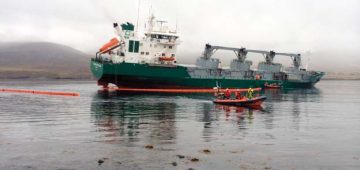The realisation of the impact upon companies of the impending sulphur regulations for 2015 is still making headlines. Stena Line embarked upon a two-year Change Programme in 2013 to prepare the company for the additional £100 million required to place it on a more secure financial footing post-directive implementation.
The rolling programme has resulted in a number of steps being taken including the reduction from two vessels to one on the Trelleborg- Sassnitz route and the fact that Stena Line is now being forced to increase its prices to freight customers by around 15% as a direct result of the change in legislation.

For Stena Line alone the changes mean an increase in fuel costs of more than £100,000 per day, or around £41 million per year as a result of having to use the more expensive low sulphur fuel. In an unrelated move, the Stena Daea Line venture between Sokcho in South Korea and Vladivostock/Zarubino in Russia was reported as closing at the end of September. The 19.5 hour voyages were undertaken by the 16,485gt/1989 built New Blue Ocean.
From 19th October Stena Line introduced a trial service between Liepaja and Nynäshamn Sweden. The company already serves Travemünde in Germany and the ferries from this route, the 13,294gt/1982 built Ask and the 13,144gt/1981 built Urd, will serve the trial link.

Among other major operators, P&O Ferries announced in October 2014 that the new sulphur rules will increase the company’s fuel bill by £30 million per annum. As from 1st January it too will be introducing surcharges. The timing of the EU’s massive financial imposition upon the industry when operators are already battling for every customer is highly questionable, regardless of the timescale.





Comments
Sorry, comments are closed for this item